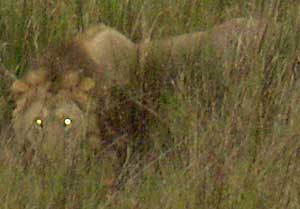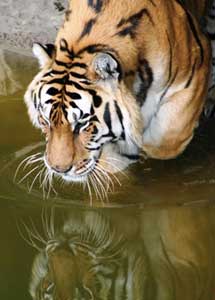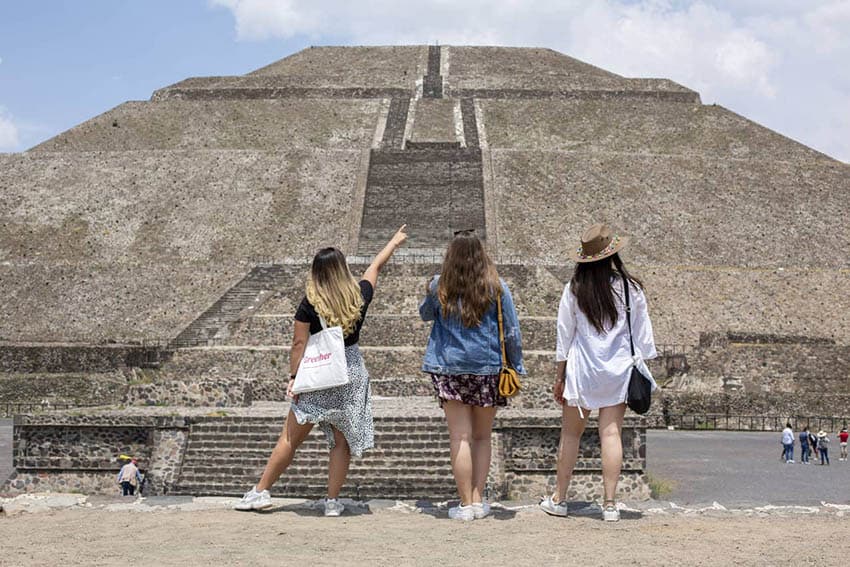
GoNOMAD has published numerous articles about interacting with wild animals because this is often part of people’s travel experience, but there are many important issues that responsible travelers should consider in making decisions about game parks and reserves.
Everyone can feel the sadness and suffering of animals in zoos and circuses. But then there are responsible programs that provide resources for conservation, and for local communities, and promote awareness of the plight of endangered species.
And if people in poor countries find a way to make a living, we believe people in wealthy countries ought to think long and hard before telling them what they should and should not do.
So there are many important issues involved, and GoNOMAD would like to provide an open forum to discuss them.
We have received numerous responses to two recent articles: Oudtshoorn, South Africa: Ostrich Rides and Animal Encounters and Wild Thailand: Elephants, Cobras and Tigers.
“GoNOMAD Should Be Ashamed”
Deborah Albert, MD wrote: “I am completely disappointed after reading the article on South Africa and your enjoying and condoning the exploitation of these animals. I would have thought an editor of GoNOMAD and a world traveler would be much more enlightened. I guess I was completely wrong about your organization. I think it vital that you educate yourself and print something that will not promote these practices. The same for the Thai Tiger Temple. GoNOMAD should really be ashamed!!!!!”
A lion in Kenya – photo by Jenna Kellam

Response From Cango
The Cango Wildlife Ranch in Oudtshoorn offers this statement on their website:
About Our Animals
The animals resident at the Cango Wildlife Ranch come from all over the world and are here for a huge variety of reasons.
Some of our animals have been rescued from the wild or landed on our doorstep by default. It is heart-warming to see how many concerned animal people you find in everyday living. We get a huge amount of concerned citizens bringing us injured animals picked up next to the road. These little patients are usually nursed back to health and released back into the wild depending on the nature of their injuries
Some of our snakes and crocodiles are only here for a short period of time. We have breeding exchange programs with a fair amount of breeding facilities and will ‘swop’ some of our animals for a period of time to make sure that the animals don’t inter-breed.
Our cheetahs, Bengal tigers and Pygmy hippos are part of our breeding and educational program. These animals are endangered are being bred in captivity to ensure the survival of the species. Their residency also provides much needed education to the general public visiting the ranch on the plight of not only these particular species but animals all over the world.
Brian has many magnificent photos on his website.

Our mission is to save animals such as the cheetah from extinction and to educate people on the vulnerability and importance of our wildlife.
“It Looks Like Fun”
Brian of Brian’s Art for Animals sent us this video on animal petting along with these comments:
“I hope you and your staff view this short video I did about the cub petting business for tigers and lions. I know it looks like fun and that by paying the people for this few minutes of playing or holding a tiger/lion cub and getting your picture taken… It is not any help to the animals nor their conservation in the wild.
This is a huge topic and very controversial among many in the conservation field. We live in a time where money is needed to fund the many great conservation groups out there in the wild working around the clock to save as many species as possible.
So does the raising of the money from facilities like Cango Wildlife Ranch make a difference as long as some of it goes into wildlife conservation? Do we have time to care about the ethics and manner of how some of the money that eventually finds its way into wildlife conservation programs came about?
Well, in my opinion, it does matter as a lot of what we did in the past failed. People have interacted with tiger cubs and baby animals for a long time, and we still see poaching, and the legal and illegal pet trade/market growing. We need to start showing respect for wildlife and not exploitation.
I am glad they take in unwanted wildlife and sick animals. But is that their whole story?
This place is located in Africa yet uses white tiger cubs (a nonnative species) to bring in the money and tourists. With allowing visitors to play with the cubs for money they are setting themself up for being able to mostly make money off of the interactions with cubs and not the adult cats.
Where do the adult cats go? Are they sent to sub-par zoos, sanctuaries? private owners? I would want to see what kind of life they have for an animal that can live to be 16-20 years in captivity. We suffer greatly here in the US from the ‘here today gone tomorrow’ type mentality and I wonder if it is any better in South Africa?
They are not a part of any global tiger breeding programs that I know of. So they are all simply surplus tiger. Can you have a surplus of an endangered species? I am afraid so. We here in the US have more captive tigers (5,000-10,000) than all of the wild tigers (+/-2,500) put together. I would call that a surplus as the majority of captive tigers are not a part of any accredited breeding or educational programs, but reside in someone’s backyard.
White tigers as popular as they are, it should be noted, are NOT a separate species of tiger and the AZA (American Zoo Association) has asked its zoos here in the US to stop breeding them and focus on the purebred tigers in the SSP. Since this place likes to show off the white tigers, what happens to the tigers that come out of the regular orange and black? Do they cast them away?
Tigers are not reintroduced into the wilds of India. They have relocating programs for the few wild tigers out there as well as are doing what they can to protect the tiger and its habitat. If at some future point where reintroduction of a big cat could work I doubt they would be using white tigers that have been handled by people. As well as any of the cheetahs that they also allow the interactions with.
So they are used solely to bring in money and Cango would argue that they are used as educational ambassadors for their wild cousins. Well if we want to teach people that India is filled with white tigers that will let you play with their cubs, then maybe one could argue the educational aspect of these hands-on experiences with the cubs. With the attention and funds going into baby captive tigers, no wonder why we have failed this magnificent animal so far.
As for their Cheetah Conservation Foundation, as I see it, it is not the worldly known CCF (Cheetah Conservation Fund, which has not only released Cheetah back into the wild but also has community programs attached to it) but a separate group that they started themselves.
Seems to me this is yet another money-making facility that may have some of their hearts in the right place but I am not sure if the money has gone to their heads. We have here in the US many roadside zoos and non-accredited places that will drag baby animals (mostly tiger cubs) from start fair to car show. To store openings to business conferences all in the name of animal conservation/education.
Many dodge the simple USDA laws and over breed and pull the cubs or lie about their ages so they can make more money off of them and that mom can be bred again sooner than natural.
I think as animal educators we can do a much better job in getting people to respect wildlife than to rely on the old “pay to play with the baby animals” to do it for us. At the end of the day, it is up to the local people who live around a lion, cheetah, or tiger if that animal will fail. It is not up to the passing tourist who paid a few dollars to get a picture taken and then goes on with their day to day life. I would think that the locals would care to save their native wildlife if we showed some respect to it, instead of looking for ways to capitalize on it.
Thank you.
-Brian
“Brian’s Art for Animals”
See more comments on Page Two
Want to add your views to this discussion? Email Max Hartshorne, GoNOMAD Editor.
- Greece Getaway: Camping Hacks for Your Next Getaway - April 25, 2024
- Products and Clothing You Might Enjoy - April 25, 2024
- Saudi Arabia Might Be Your Next Getaway Spot - April 23, 2024



